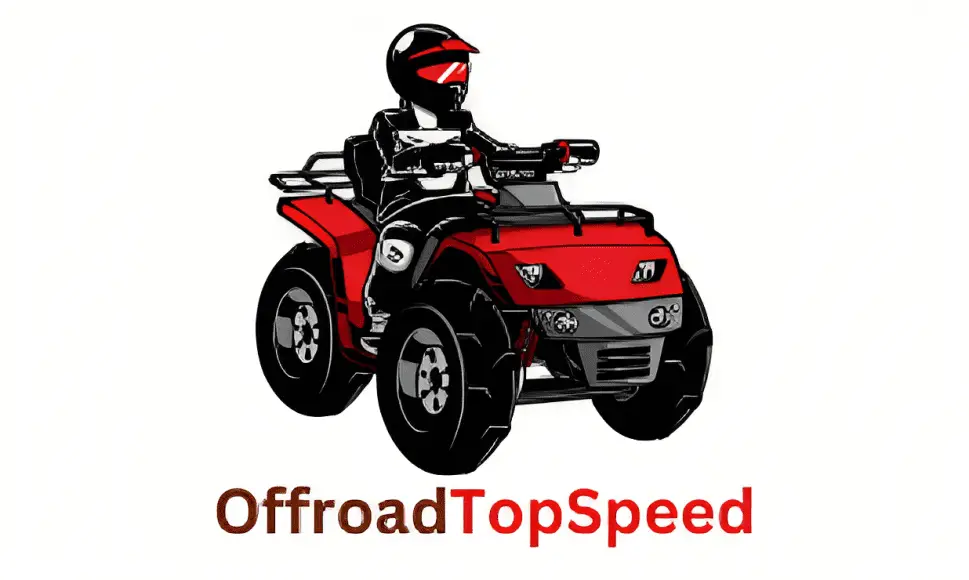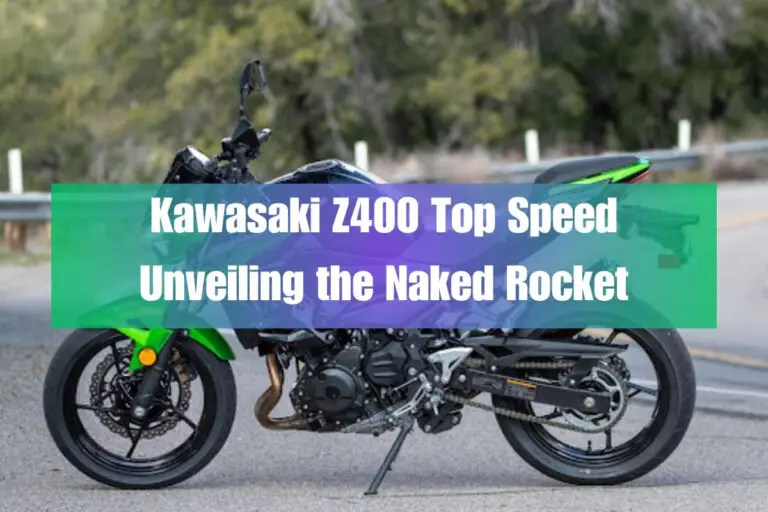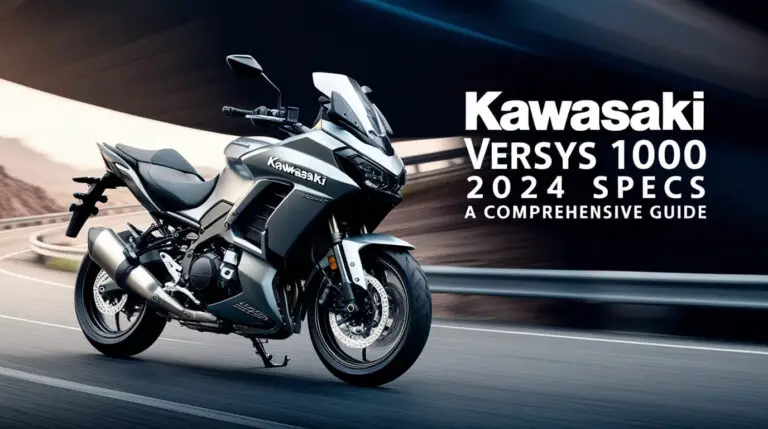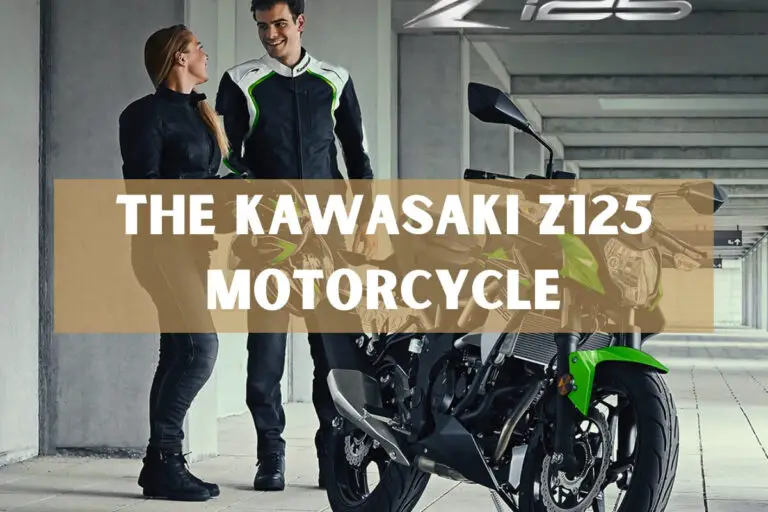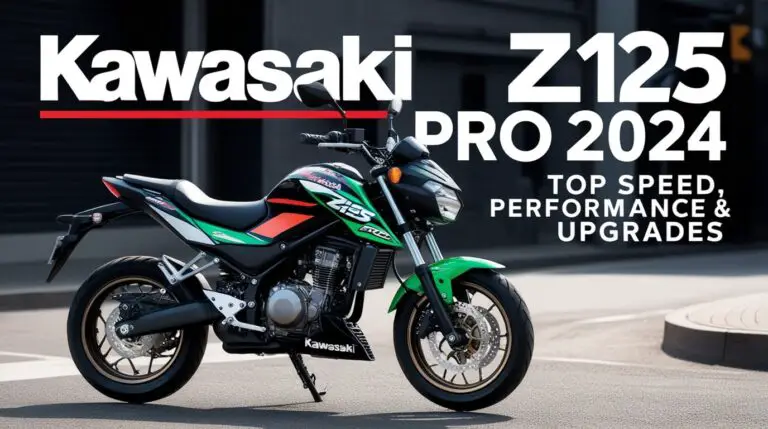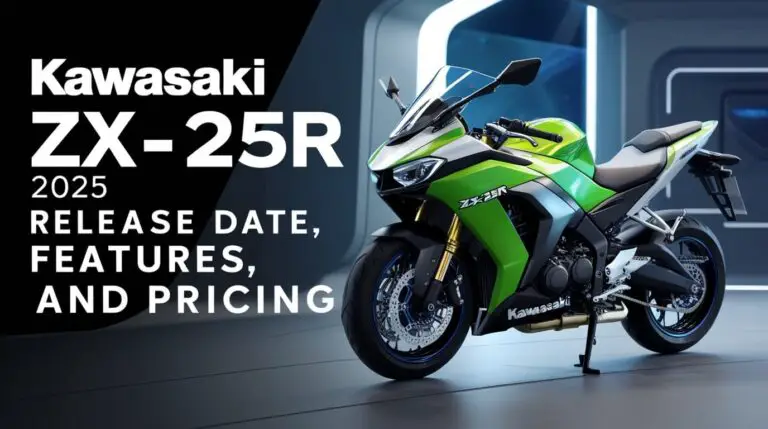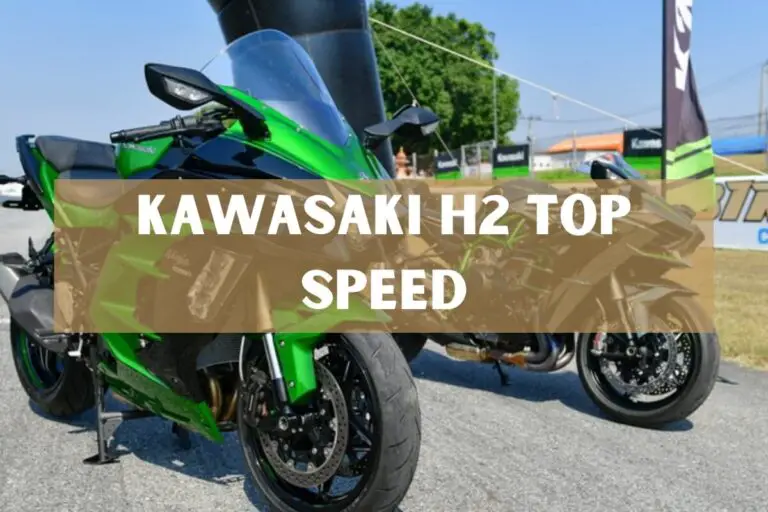2023 Kawasaki Ninja 400 Top Speed: How Fast Can This Sporty Beast Go?
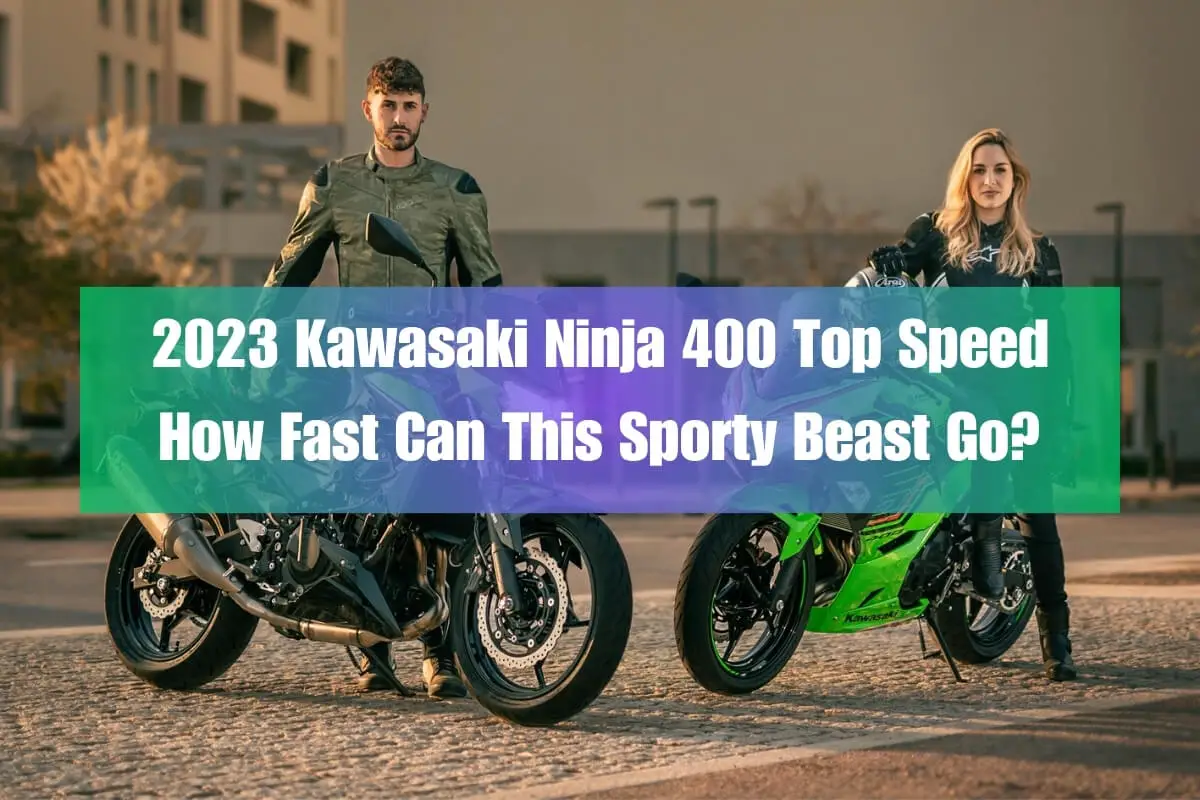
If you’re in the market for a lightweight, agile, and affordable sportbike, the 2023 Kawasaki Ninja 400 is likely on your radar. This bike has been a fan favorite for years, thanks to its approachable yet exhilarating performance, comfortable ergonomics, and sharp styling inspired by larger Ninja supersport models.
One of the most common questions potential buyers have is, “How fast can the Ninja 400 go?” In this comprehensive guide, we’ll dive deep into the top speed capabilities of this popular bike, along with its acceleration, riding experience, technical specs, owner reviews, comparisons with competitors, and more. So, let’s get started!
Bike Model Overview
Bike Model Introduction
The Kawasaki Ninja 400 is a 399cc parallel-twin sportbike designed for both novice and experienced riders. It’s the largest displacement bike in its class, offering a perfect balance of high-performance thrills and easy-to-use power.
With its aggressive Ninja styling, LED headlights, and a relaxed yet sporty riding position, the Ninja 400 delivers a true supersport experience without being overly intimidating.
Pricing and Availability
The 2023 Kawasaki Ninja 400 has a manufacturer’s suggested retail price (MSRP) of $5,299–$5,499 for the non-ABS model and $5,699–$5,899 for the ABS model. Additionally, there’s a $435 destination charge and a $300 commodity surcharge, so the actual price may vary by dealer.
The bike is widely available at Kawasaki dealerships across the United States and other markets.
Key Features and Specifications
- 399cc liquid-cooled parallel-twin engine
- 6-speed transmission with assist and slipper clutch
- 30.9-inch seat height
- 41mm telescopic front fork and horizontal back-link rear suspension
- 310mm front and 220mm rear disc brakes (with ABS option)
- Trellis high-tensile steel frame
- Curb weight of 368.2 lbs (ABS model)
- 3.7-gallon fuel tank
- LED headlights and LCD instrument cluster
Performance
Top Speed: How Fast Can It Go?
According to Kawasaki, the 2023 Ninja 400 has a top speed of 118.1 mph. However, many owners have reported achieving higher speeds, ranging from 120+ mph to as high as 145 mph.
Factors that can affect the top speed include:
- Modifications (exhaust, air intake, etc.)
- Rider weight
- Tailwind or headwind conditions
- Gearing
It’s important to note that exceeding the recommended top speed can be dangerous and may void the warranty. Additionally, speed limits and local laws should always be followed.
Acceleration: 0-60mph Time and More
While top speed is exciting, acceleration is equally crucial for a sportbike’s performance. The Ninja 400 boasts impressive acceleration numbers:
- 0-60 mph: 4 seconds
- 0-100 mph: 11 seconds
- 60-100 mph: 7 seconds
These figures make the Ninja 400 a capable bike for both urban commuting and spirited rides on twisty backroads.
Riding Experience: Handling, Suspension, and Brakes
Top speed and acceleration are only part of the performance equation. The Ninja 400 also delivers a thrilling riding experience thanks to its nimble handling, well-sorted suspension, and progressive braking.
The trellis frame and lightweight construction contribute to the bike’s agility, while the 41mm front fork and horizontal back-link rear suspension provide a comfortable yet sporty ride. The semi-floating front disc brake and rear disc brake (with optional ABS) offer strong stopping power when needed.
Overall, the Ninja 400 strikes an excellent balance between sportiness and user-friendliness, making it a joy to ride for both beginners and experienced riders alike.
Technical Specifications (In Table Format)
| Specification | Details |
|---|---|
| Engine | 399cc liquid-cooled parallel-twin, DOHC |
| Bore x Stroke | 70.0 x 51.8mm |
| Compression Ratio | 11.5:1 |
| Fuel System | DFI with dual 32mm throttle bodies |
| Ignition | TCBI with Digital Advance |
| Transmission | 6-speed |
| Final Drive | Sealed chain |
| Front Suspension | 41mm hydraulic telescopic fork, 4.7″ travel |
| Rear Suspension | Horizontal back-link with adjustable spring preload, 5.1″ travel |
| Front Tire | 110/70-17 |
| Rear Tire | 150/70-17 |
| Front Brakes | Single 310mm semi-floating petal-type disc with 2-piston calipers (and ABS) |
| Rear Brakes | Single 220mm petal-type disc with single-piston caliper (and ABS) |
| Frame Type | Trellis, high-tensile steel |
| Rake/Trail | 24.7°/3.6 in |
| Overall Length | 78.3 in |
| Overall Width | 28.0 in |
| Overall Height | 44.1 in |
| Ground Clearance | 5.5 in |
| Seat Height | 30.9 in |
| Curb Weight | 366.0 lb (ABS), 361.6 lb (non-ABS) |
| Fuel Capacity | 3.7 gal |
| Wheelbase | 53.9 in |
| Color Choices | Metallic Carbon Gray/Metallic Matte Carbon Gray, Metallic Magnetic Dark Gray/Metallic Matte Twilight Blue, Pearl Blizzard White/Metallic Carbon Gray |
What Owners Say
To get a well-rounded understanding of the 2023 Kawasaki Ninja 400, it’s essential to consider owner reviews and feedback.
Positive Reviews: Quotes from Satisfied Owners
Here are some positive comments from Ninja 400 owners:
“The Ninja 400 is a great all-around bike. It’s comfortable for commuting, yet still offers enough power and handling to have fun on back roads.” – John, Los Angeles
“I’m a new rider, and the Ninja 400 has been the perfect bike for me to learn on. It’s forgiving yet still exciting to ride.” – Sarah, Miami
“The build quality and attention to detail on this bike are impressive, especially considering its affordable price point.” – Mike, Chicago
Negative Reviews: Quotes from Owners with Issues
While most owners seem pleased with their Ninja 400, there are a few common complaints:
“The initial bite from the throttle could be smoother. It can be a bit jerky at low speeds.” – Tom, Seattle
“The lightweight nature of the bike means it gets pushed around quite a bit by wind gusts or passing trucks.” – Alex, Houston
“The positioning of the right foot peg is awkward for taller riders like myself (6’2″). My heel rests on the exhaust.” – David, Boston
Common Complaints and Praise
Some of the most frequent praises for the Ninja 400 include its great handling, slick-shifting gearbox, comfortable ergonomics, and sharp styling. On the flip side, common complaints revolve around the initial throttle response, wind buffeting at higher speeds, and the foot peg positioning for taller riders.
Comparison
Top Speed Comparison with Competitors
While the Ninja 400’s claimed top speed of 118.1 mph is respectable, it’s worth comparing it to some of its competitors in the entry-level sportbike segment:
- Yamaha R3: 115 mph
- KTM RC 390: 105 mph
- Honda CBR500R: 116 mph
- Aprilia RS 660: 162 mph (higher displacement)
As you can see, the Ninja 400 holds its own in terms of top speed against its direct rivals, although bikes with larger displacements like the Aprilia RS 660 will outpace it.
Feature Comparison with Similar Bikes
In addition to top speed, it’s essential to consider other features when comparing the Ninja 400 to similar bikes. Here’s a quick rundown:
- Engine displacement: The Ninja 400’s 399cc engine is larger than most competitors in its class, providing a power advantage.
- Price: With an MSRP of $5,299-$5,899, the Ninja 400 is competitively priced against rivals like the Yamaha R3, KTM RC 390, and Honda CBR500R.
- Weight: At 366 lbs (ABS model), the Ninja 400 is relatively lightweight, aiding in its agile handling characteristics.
- Suspension: The 41mm front fork and horizontal back-link rear suspension offer a balanced ride quality, similar to other sport-oriented bikes in this segment.
- Brakes: The 310mm front and 220mm rear disc brakes (with optional ABS) provide strong and progressive braking performance.
- Ergonomics: The Ninja 400’s relaxed yet sporty riding position, low seat height, and overall dimensions cater well to a wide range of riders.
While specs and features are important, it ultimately comes down to personal preferences and test rides to determine which bike best suits your needs and riding style.
Modifications and Upgrades
For many riders, the stock Ninja 400 is an excellent package straight from the factory. However, some may want to consider modifications and upgrades to further enhance performance, comfort, or aesthetics.
Best Modifications to Increase Top Speed
If you’re looking to eke out a few extra mph from your Ninja 400, here are some popular modifications:
- Exhaust: Slip-on mufflers or full exhaust systems can increase horsepower from 42-43 hp to 45-46 hp.
- Air intake: A stage 3 airbox kit can further boost horsepower to around 53 hp.
- Gearing: Changing the sprocket sizes or final drive gearing can alter the bike’s top speed and acceleration characteristics.
- ECU tuning: Reflashing the engine control unit (ECU) with a performance tune can optimize the air/fuel mixture and ignition timing for more power.
It’s important to note that extensive modifications may void the warranty and could potentially make the bike less reliable or emissions-compliant.
Recommended Upgrades for Performance and Comfort
In addition to top speed mods, there are plenty of other worthwhile upgrades for the Ninja 400:
- Tires: Upgrading to higher-performance tires like the Michelin Road 6 can improve grip and handling.
- Grips: Ergonomic grips from brands like Tech Spec can reduce hand fatigue on longer rides.
- Windscreen: A taller windscreen like the Zero Gravity Corsa can improve wind protection on the highway.
- Suspension: Upgrading to higher-quality suspension components can enhance the ride quality and handling precision.
- Clutch: Swapping out the clutch springs or installing a slipper clutch can prevent slipping under hard downshifts.
The options are virtually endless, so it’s best to prioritize upgrades based on your specific needs and budget.
Pros and Cons
To help you make an informed decision, let’s take a look at some of the key pros and cons of the 2023 Kawasaki Ninja 400.
Advantages
- Approachable yet exciting performance for both new and experienced riders.
- Comfortable and ergonomic riding position with a low seat height.
- Sharp styling inspired by larger Ninja supersport models.
- Lightweight and agile handling characteristics.
- Slick-shifting gearbox and light clutch action.
- Competitive pricing compared to rivals.
- Impressive fuel efficiency for a sportbike.
Disadvantages
- Top speed and acceleration are good but not class-leading.
- Somewhat buzzy and vibration-prone at higher RPMs.
- Wind protection could be better for highway riding.
- Peg positioning can be awkward for taller riders.
- Limited aftermarket support compared to more popular models.
While no bike is perfect, the Ninja 400 offers a well-rounded package that appeals to a wide range of riders, with its advantages generally outweighing its drawbacks.
Alternatives
If the 2023 Kawasaki Ninja 400 doesn’t quite tick all the boxes for you, there are several alternatives worth considering in the same class.
Top Alternatives in the Same Class
- Yamaha R3: A direct competitor to the Ninja 400, with similar performance and pricing.
- KTM RC 390: Known for its sharp handling and aggressive styling.
- Honda CBR500R: A more budget-friendly option with a larger 471cc parallel-twin engine.
- Benelli 302R: An affordable Italian option with a unique inline-twin engine configuration.
Why You Might Consider a Different Bike
While the Ninja 400 is an excellent all-around sportbike, there may be scenarios where an alternative bike could better suit your needs:
- If top-end speed and acceleration are priorities, you may want to consider a bike with a larger displacement engine like the Aprilia RS 660 or Yamaha R7.
- If you prioritize long-distance touring capability, a more upright and wind-protected bike like the Kawasaki Versys 650 or Yamaha Tracer 7 could be a better fit.
- If you’re on a tighter budget, the Honda CBR500R or KTM 390 Duke offer similar performance at a lower price point.
Ultimately, it’s crucial to test ride various bikes and assess your specific needs and preferences before making a purchase decision.
Who’s It For?
The 2023 Kawasaki Ninja 400 is a versatile bike that can appeal to a broad range of riders, but it may not be the ideal choice for everyone.
Who Should Buy This Bike
The Ninja 400 is an excellent option for:
- New riders looking for an approachable yet exciting bike to learn on.
- Experienced riders seeking a lightweight and flickable sportbike for canyon carving or urban commuting.
- Riders on a budget who want a well-equipped and capable bike without breaking the bank.
- Shorter riders who appreciate the low seat height and overall compact dimensions.
Who Should Not Buy This Bike
While the Ninja 400 is a fantastic all-around sportbike, it may not be the best choice for:
- Riders primarily focused on top-end speed and acceleration (larger displacement bikes may be better suited).
- Taller riders who may find the ergonomics and peg positioning uncomfortable.
- Riders planning to do a significant amount of highway touring (wind protection could be lacking).
Ideal Use Cases and Riding Styles
The Ninja 400 truly shines in the following use cases and riding styles:
- Urban commuting and navigating tight city streets.
- Twisty backroad carving and weekend canyon rides.
- Track days and beginner-level racing events.
- Short-distance touring (with the addition of luggage and wind protection accessories).
Its lightweight, agile nature, and user-friendly power delivery make it a joy to ride in various environments, as long as extended high-speed highway stints aren’t a primary focus.
Troubleshooting
Like any motorcycle, the 2023 Kawasaki Ninja 400 may experience certain issues over time. Here are some common problems and their potential fixes, along with some general maintenance tips.
Common Issues and Their Fixes
- Clutch slipping: This could be caused by worn clutch plates or improper adjustment. Replacing the clutch pack or adjusting the cable may resolve the issue.
- Stalling or rough idling: Clogged air filters, faulty spark plugs, or vacuum leaks could be the culprit. Cleaning or replacing the affected components may fix the problem.
- Suspension issues: If the suspension feels too soft or bottoms out frequently, it may be time to replace the fork oil or rear shock.
- Electrical gremlins: Battery issues, loose connections, or faulty sensors can cause electrical problems. Thorough testing and component replacement may be required.
Maintenance Tips and Tricks
To keep your Ninja 400 running smoothly and avoid potential issues, follow these maintenance tips:
- Regularly change the engine oil and filter according to the recommended intervals. *Keep the air filter clean or replace it when necessary.
- Inspect and adjust the chain tension and lubrication regularly.
- Check the brake pads and fluid levels periodically.
- Keep an eye on tire wear and pressures for optimal grip and handling.
Following the manufacturer’s recommended maintenance schedule and addressing any issues promptly can go a long way in ensuring a reliable and trouble-free ownership experience.
Final Thoughts and Recommendation
The 2023 Kawasaki Ninja 400 is a well-rounded and capable sportbike that offers an excellent balance of performance, user-friendliness, and affordability. With a top speed of around 118 mph (with some owners reporting even higher figures), it provides more than enough thrills for most riders, complemented by its nimble handling, comfortable ergonomics, and slick gearbox.
While it may not be the outright fastest or most powerful bike in its class, the Ninja 400 excels in its approachable nature, making it an ideal choice for new riders looking to enter the world of sportbikes, as well as experienced riders seeking a lightweight and flickable canyon carver.
Considering its competitive pricing, impressive build quality, and Kawasaki’s reputation for reliability, the 2023 Ninja 400 is a strong contender that ticks many boxes for those in the market for a well-rounded, do-it-all sportbike.
If you prioritize top-end speed and acceleration above all else, or if you plan to spend significant time on the highway, you may want to consider larger-displacement alternatives. But for most riders seeking an exhilarating yet manageable ride, the Ninja 400 is an excellent choice that won’t disappoint.
